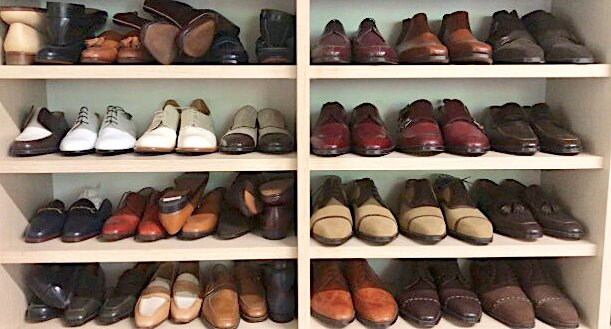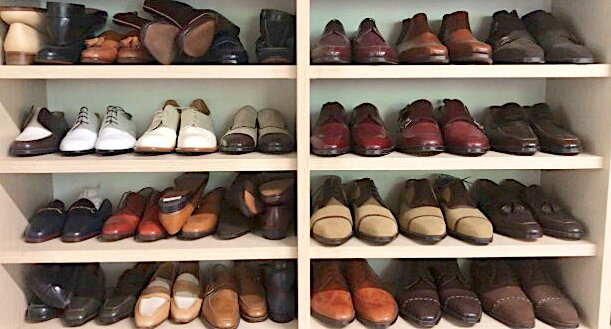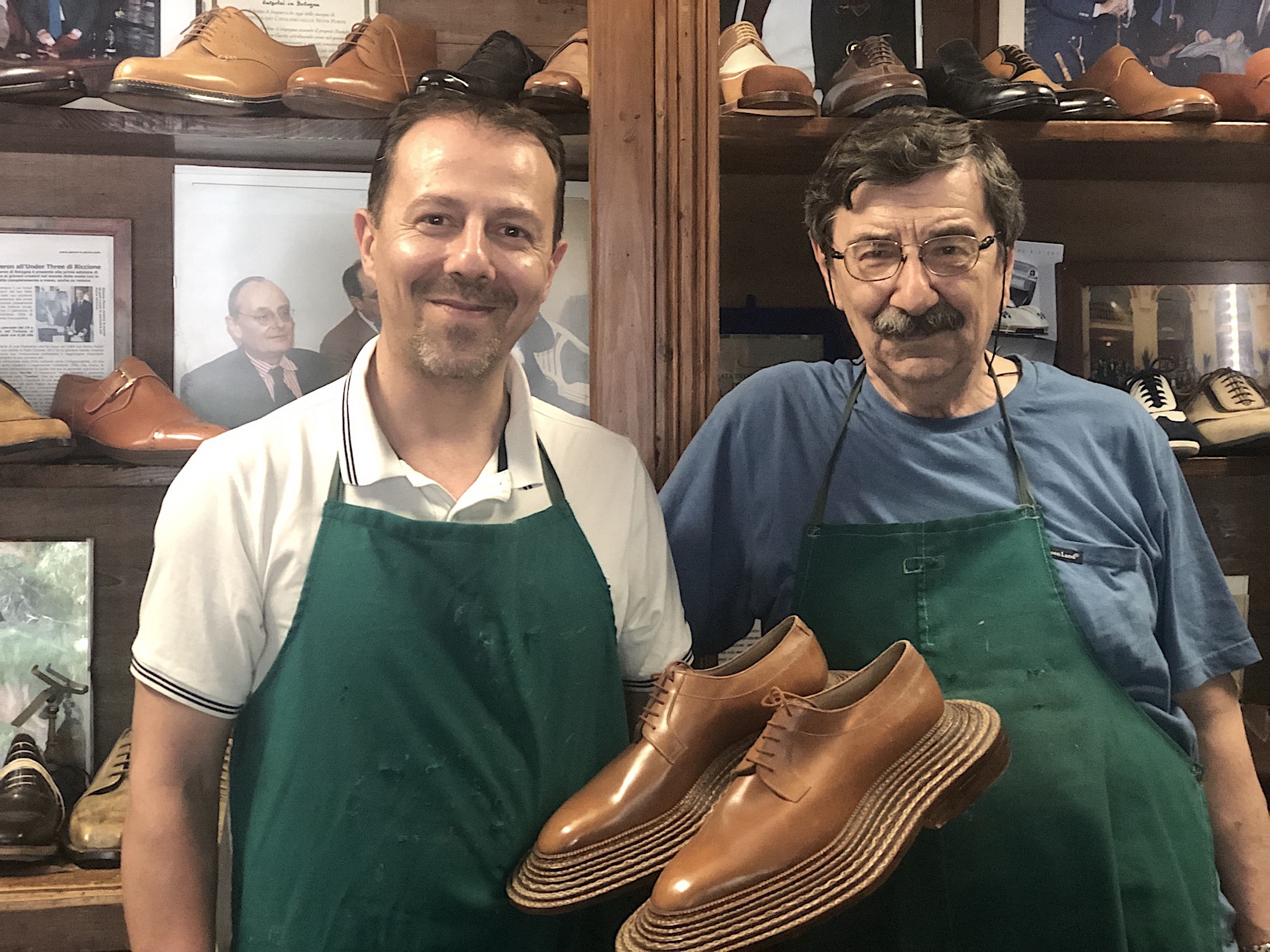
Wealthy Asian clients, happy to fly the shoemakers to their homes for bespoke fittings and designs, keep Bologna’s remaining shoemakers in business
Not so long ago, one could find endless rows of handmade leather shoes lining the walls of family-owned shoemakers’ shops. Shoes were a signature local product, like tagliatelle alla ragu, classical music and the politics of the left. Now only a few Bolognese shoe enterprises soldier on, producing high-quality, bespoke leather shoes – often for customers in Asia.
In the 1930s and 40s, there were over 40 shoemaking shops in Bologna. Today there are only three.
In the 1930s and 40s, there were over 40 shoemaking shops in Bologna. Today there are only three. With the rise of mass production, the number of shops dwindled, and the apprenticeship system, under which the next generation learned to make shoes, languished.
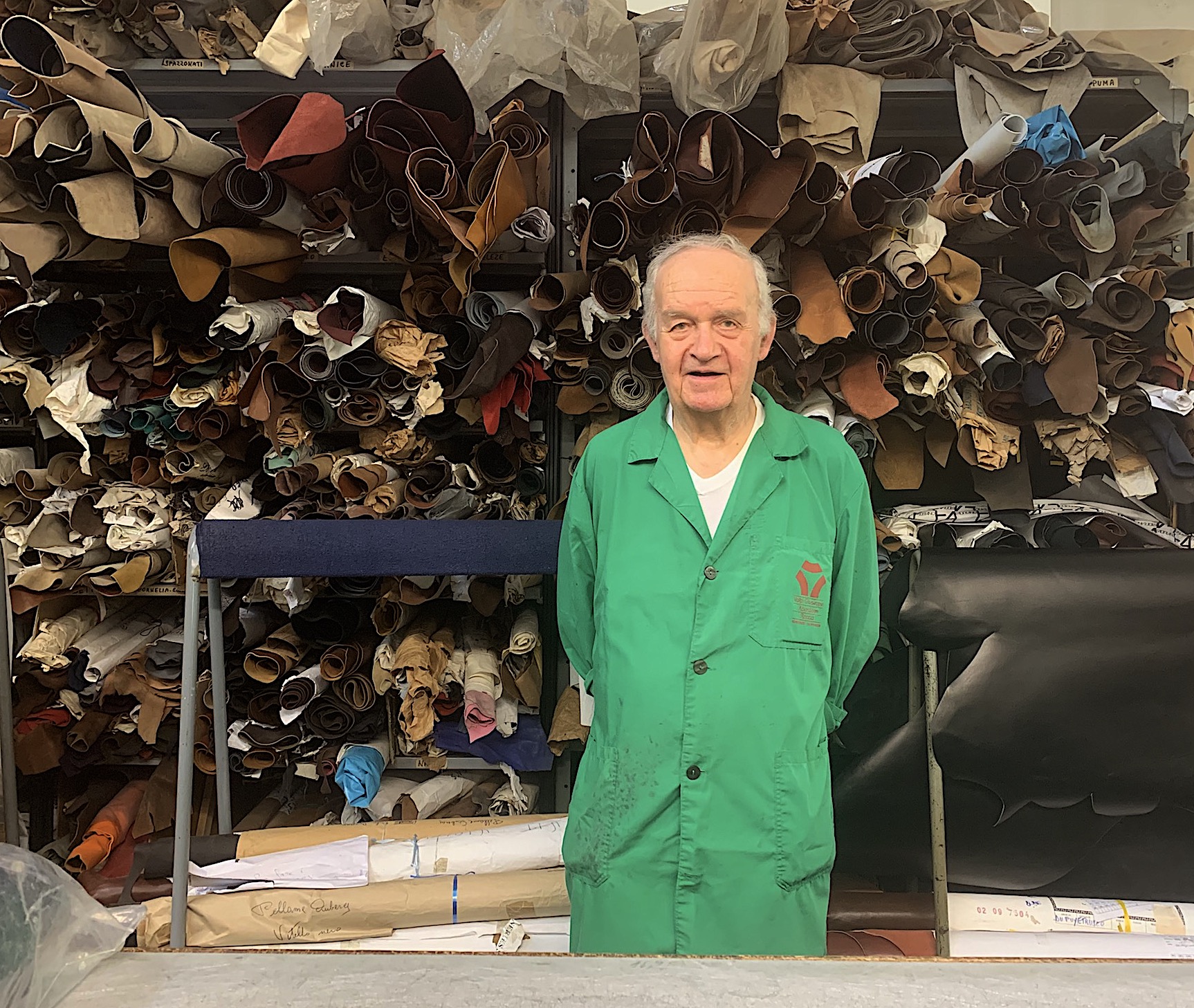
Designing for one
Shoemaker Enzo Bonafé learned to make shoes at Bologna’s Testoni factory, after WWII. He specialized in choosing and cutting leather. He married, then founded his own company, creating his first handmade pair of shoes in his own shop in 1966.
Bonafé believes his clients return for quality, status and originality – plus personal attention. Clients are no longer satisfied with merely choosing a shoe on the website. They like to meet the family, choose their own materials, be fitted and receive a personalized product.
Like all of the remaining shoe producers in Bologna, Bonafé’s main market has shifted abroad – especially to Japan, where wealthy customers with a passion for “Made in Italy” think nothing of flying in the shoemakers for personal design discussions and fittings.
Bonafé’s son Massimo said that, while Italians do not recognize them, in Japan the shoemakers are celebrities: people stop them in the street, and ask to take their pictures.
While Italians do not recognize them, in Japan the shoemakers are celebrities: people stop them in the street, and ask to take their pictures.
Customers help shape the designs. For instance, a tailor for a famous musician in Oslo was also an Enzo Bonafé client. The rock star they worked for asked for specific leather boots to be created. The boots were so popular that they were added to the company’s line. Another client asked for African leather boots to wear to an elegant event; the company thereafter began adding diamond embroidery to that type of shoe.
The difference between Enzo Bonafé and smaller shoe companies is that smaller companies must charge more for their shoes, due to the lack of machines and workers, the Bonafés said. Because it operates a small factory, the company can make 25 handmade shoes in one day, instead of just a pair or two.
“There is structure in the factory, and artisanship in production,” Enzo’s son Massimo said.
The demand for Italian leather shoes is weaker, and the clients are older, in Europe – whereas in Japan, demand is higher, and the clients are much younger, the shoemakers say. In Japan, attire determines status, in the perception of the Italians – who believe this is the reason their clients are willing to pay so handsomely for their shoes.
The Bonafés attend the annual Pitti Uomo event in Florence, the world’s most important men’s fashion event. That’s very good for business, as Florence’s proximity to Bologna (it’s 45 minutes away) also attracts new customers.
Following clients abroad
Massimiliano Mazzucchi, co-owner of the shoemaking firm Max & Gio, says he sees steady demand from both Japanese and American customers.
“Japanese clients love the ‘Made In Italy’ phrase in all of their clothing, not only shoes,” Mazzucchi said.
Mazzucchi visits either United States or Japan once per month to work with his customers on designs and fitting.
“American clients like handmade shoes because there aren’t many handmade things in the United States, so those customers value handmade items more,” he observed.
Shoemakers use leathers from many different animals, such as calf, goat, snake, and the most popular (and costly), crocodile. The Enzo Bonafé company uses black calf leather from Germany and colored calf leather from France, and buys wooden soles from the Tuscan hills. What the company calls “standard” shoes — of calf and goat leather — cost around $725 to $1,000, while shoes made of crocodile leather can range from $1,100-$2,800.
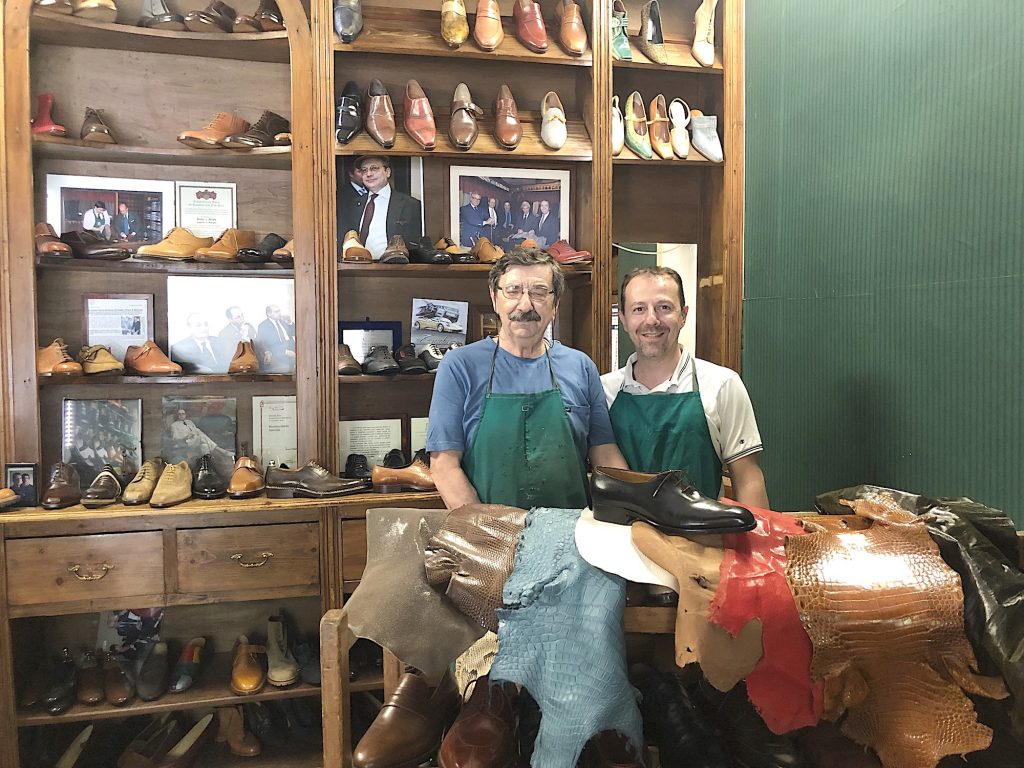
How globalization killed a neighborhood enterprise
Dr. Paolo Zurla, a University of Bologna sociologist who studied this region’s shoemaking culture, said communal enterprise helped a once-poor region prosper. For example, one shop might handle the stitching; another, the laces. The shoemakers would produce the shoes in the winter and then sell them to wealthy people vacationing at the nearby beaches in summer. Over time, though, demand for shoes outstripped small shops’ production ability, said Zurla, who studied shoemaking in the Rubicone industrial district in Cesna province, about 50 miles from Bologna on the Adriatic coast. Most businesses had a hard time keeping production handmadeand local – and so most companies were eventually sold.
Now only Enzo Bonafé, Max & Gio and third company, Peron & Peron, are left.
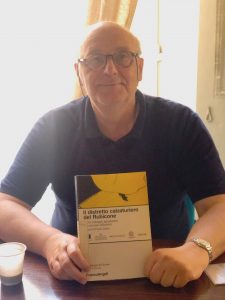
Bruno Peron founded Peron & Peron in 1983, after learning the trade from a childhood friend. His son Simone fell in love with shoemaking, and, after a brief stint in the military, told his father he wanted to join him in the trade.
The younger Peron clearly had talent: the first pair of shoes he made, meant only to give him a chance to practice, was a hit with customers.
“He spent a lot of time doing the stitching for practice, and it became one of our favorite shoes to show,” the elder Peron said proudly. The Perons have served famous clients, such as the singer Adriano Celentano, and wealthy business people in Tokyo. They say they never lack for work.
Fittings in Japan
Shoemaking now includes multiple visits to clients abroad. At Peron & Peron, the shoemakers first travel to clients’ home countries to take measurements; briefly return to Bologna to gather samples; then return abroad again, to validate the shoe size and measurements, before finally returning to Italy once more, to produce the shoes. Fifty-two hours later, the shoes are ready to wear.
All of the shoemakers insisted that they faced no competition. Yet there are inevitable downsides to globalization and mass production. Leather quality has declined. With animals being treated and fed differently due to the mass production of food, leather can feel cheaper.
But this doesn’t stop wealthy customers from knocking on Italian shoemakers’ doors.
The shoemakers say they expect to keep operating into the foreseeable future. The Bonafès point out that they’ve been in business for 106 years. Mazzucchi is likewise optimistic: “I think there will be a future of success,” he said, “because the shop is doing well.”
